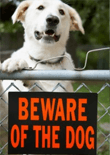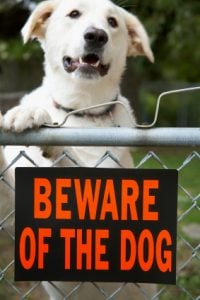Dog Aggression Training, Understanding Your Dog.
By Sally Gutteridge | Behavior

 A dog that shows signs of aggression can become a problem within a family environment; therefore any dog owner should have a basic understanding of why and how a dog can become aggressive.
A dog that shows signs of aggression can become a problem within a family environment; therefore any dog owner should have a basic understanding of why and how a dog can become aggressive.
If your dog has suddenly developed aggressive behavior it is paramount that he is checked by a Veterinarian to rule out any physical reason for his behavior change.
If a fearful dog feels threatened and unable to remove himself from the threat then he may resort to aggression as a defensive behavior. This can progress, over time, to the point of an aggressive reaction before the perceived threat is even apparent to the human eye.
A dog who has learned that aggression provides the result he would like may resort to a threatening growl or bark purely as a learned behavior. An example of this is food or resource guarding. Although guarding behavior this can also be based in fear, the fear of losing a needed resource.
The behavior of any dog will respond to the circumstance he is in. Different dog breeds have differing levels of reaction. Some breeds will not resort to aggressive stance or behavior until the absolute last resort whereas others will seem to become aggressive immediately on contact with a trigger circumstance. Successful dog aggression training will modify the dog’s immediate response to the trigger.
External signs of aggression
The early signs of aggression can easily be missed by an unaware owner. This is usually what happens when a dog is reported to have bitten with no warning.
The following points are progressive and generic signs that an aggressive response is building within your dog. Calming signals may prelude this behavior which would include yawning, glancing away and attempting to leave the situation. This depends on how reliant on aggression the dog is to produce a result.
Somewhere between posturing and biting the dog may show a slight freeze. This moment of being completely still is the dog’s natural fight or flight reaction. If the freeze is displayed and the dog cannot leave the situation he is likely to feel that he needs to bite next.
Trigger for aggressive behavior
Aggressive behavior displayed by your dog is almost always a response to a stimulant. Before commencing any type of dog aggression training it is vital to first recognize the dogs behavior and the external trigger that leads to it.
A trigger for aggressive behavior in a dog can be anything at all. It will depend on previous experiences and is usually based in fear or uncertainty. Some of the more common triggers and their possible learning processes are listed below.
Dog aggression training
If your dog is showing aggressive behavior, it is vital that by using positive and reward based conditioning that this behavior is changed. To modify any behavior type you will need to go deep into the roots of the problem, know exactly why the behavior is manifesting and treat the cause and not the symptoms, which in this case is the aggressive behavior.
Never confront a dog that is showing aggressive behavior. It is essential that the dog is not forced to carry out the behavior that he is threatening.
A behavior modification process for aggression will usually follow the stages below. Each dog will need slightly different handling depending on many factors including the dogs past, breed type and nature.
If carrying out dog aggression training is likely to put you, your dog or anyone else at risk it is imperative that you seek professional one on one advice from an established dog behaviorist or reputable positive dog trainer.
Session expired
Please log in again. The login page will open in a new tab. After logging in you can close it and return to this page.